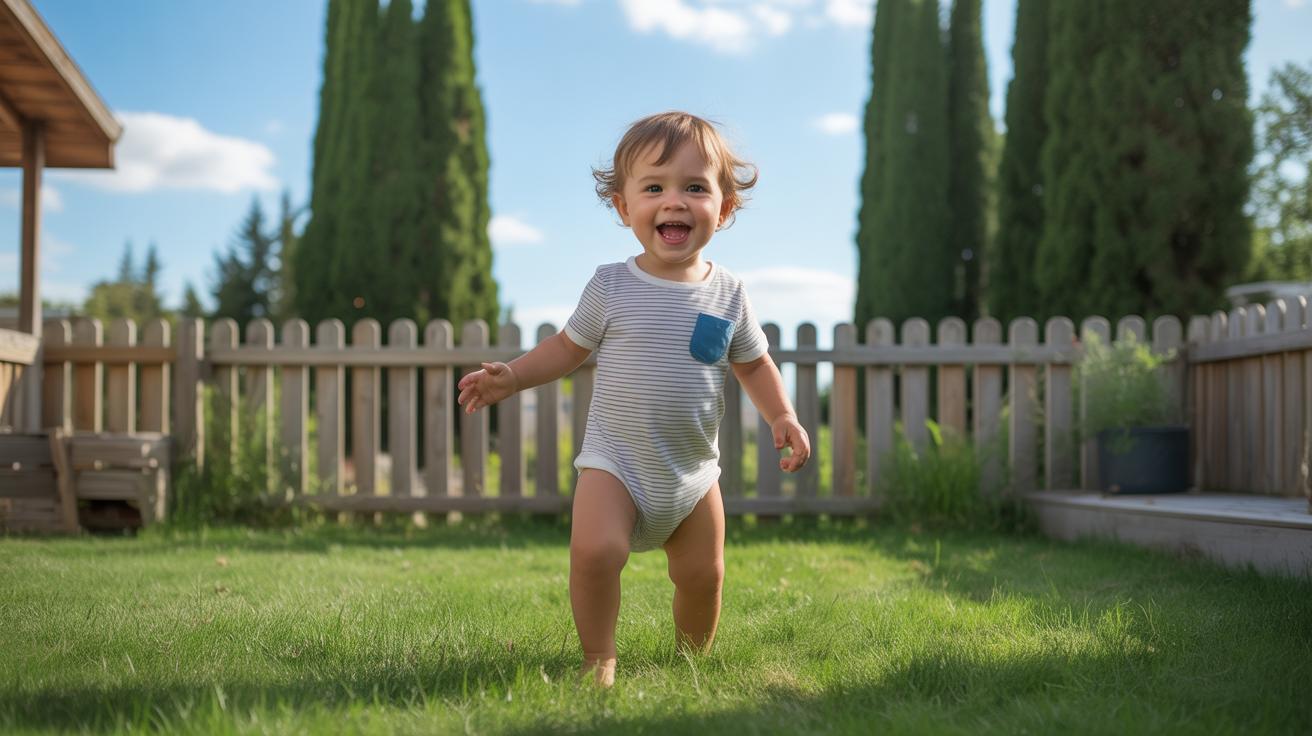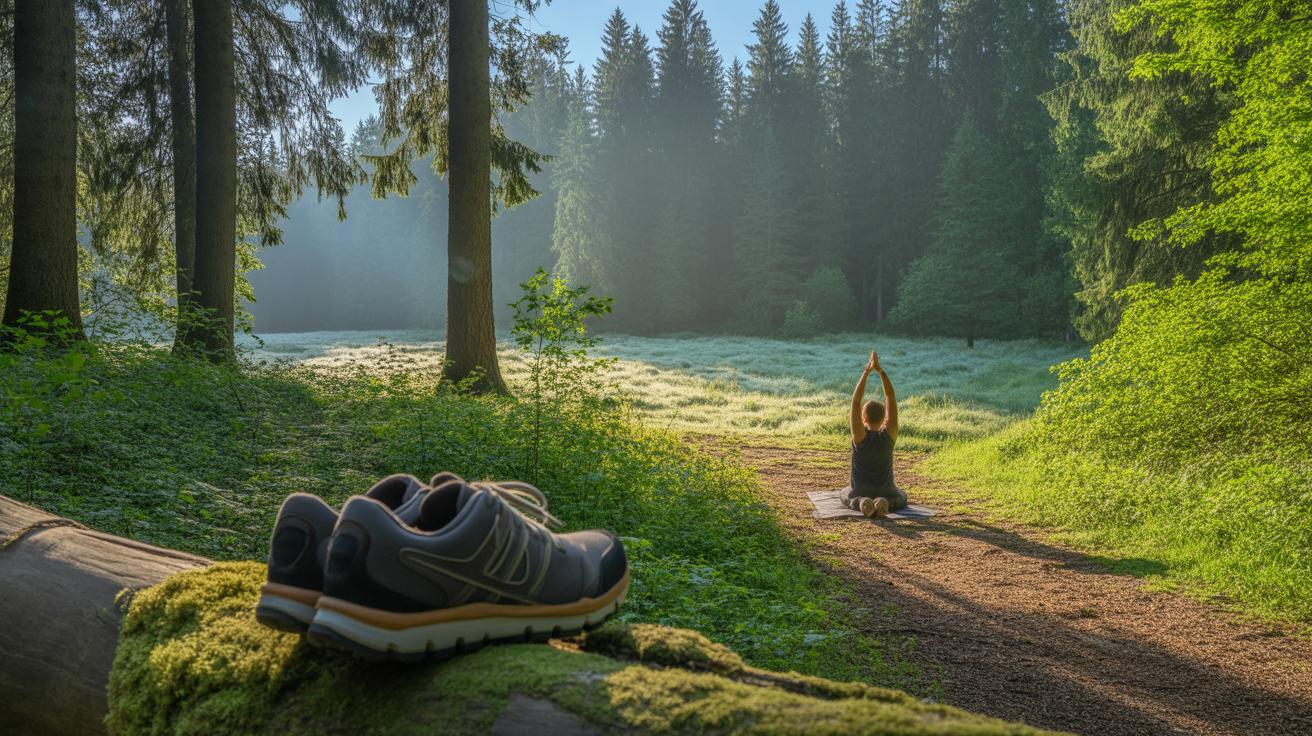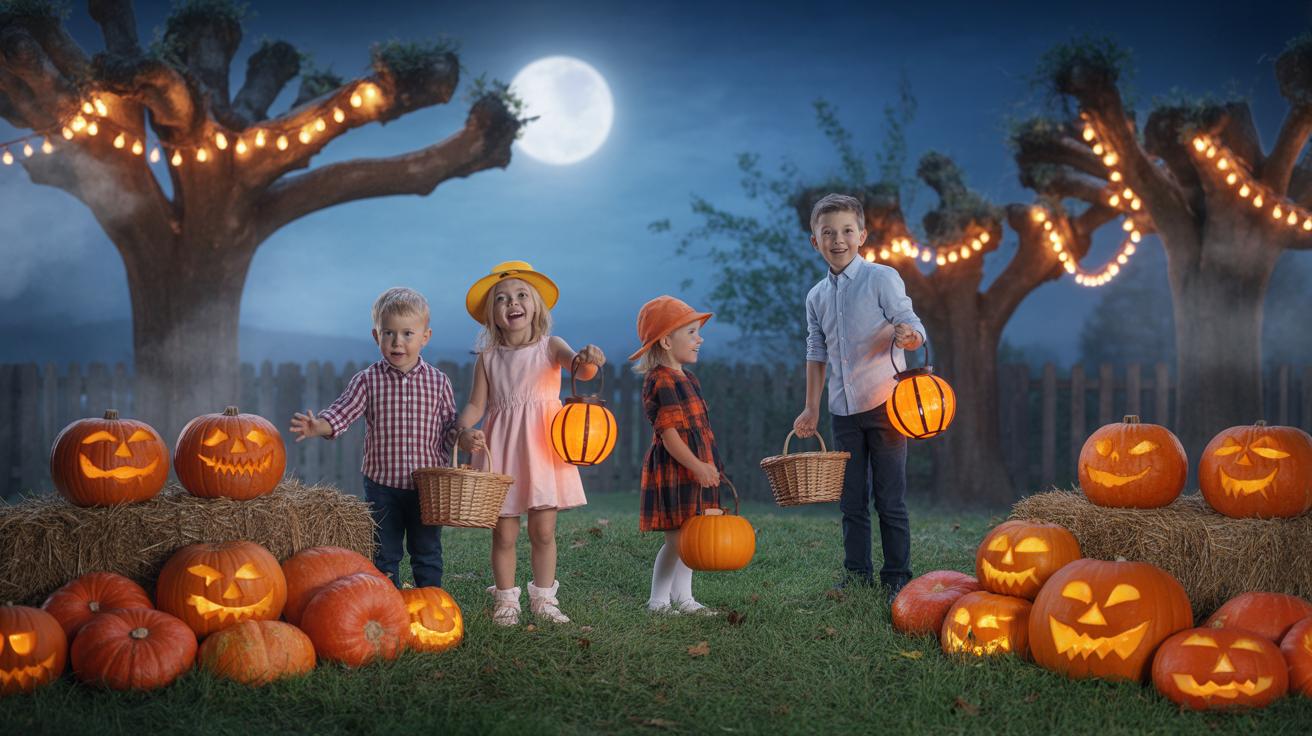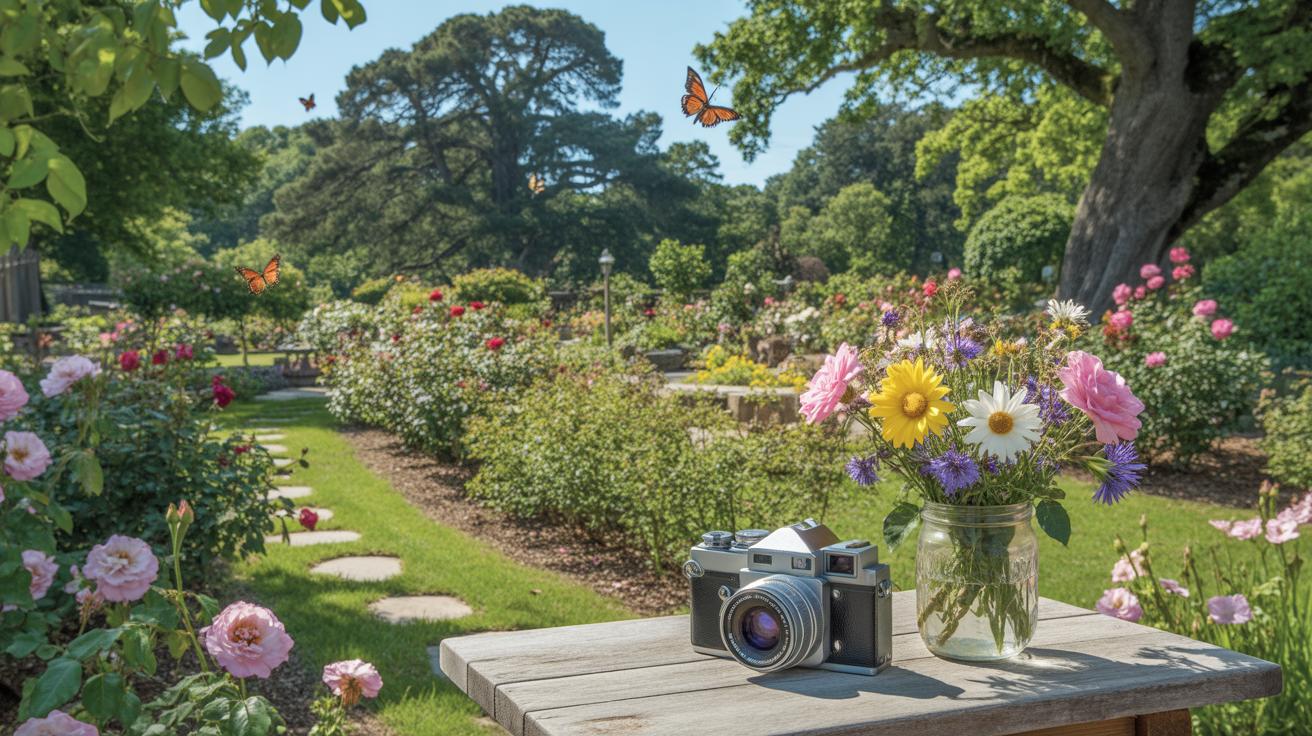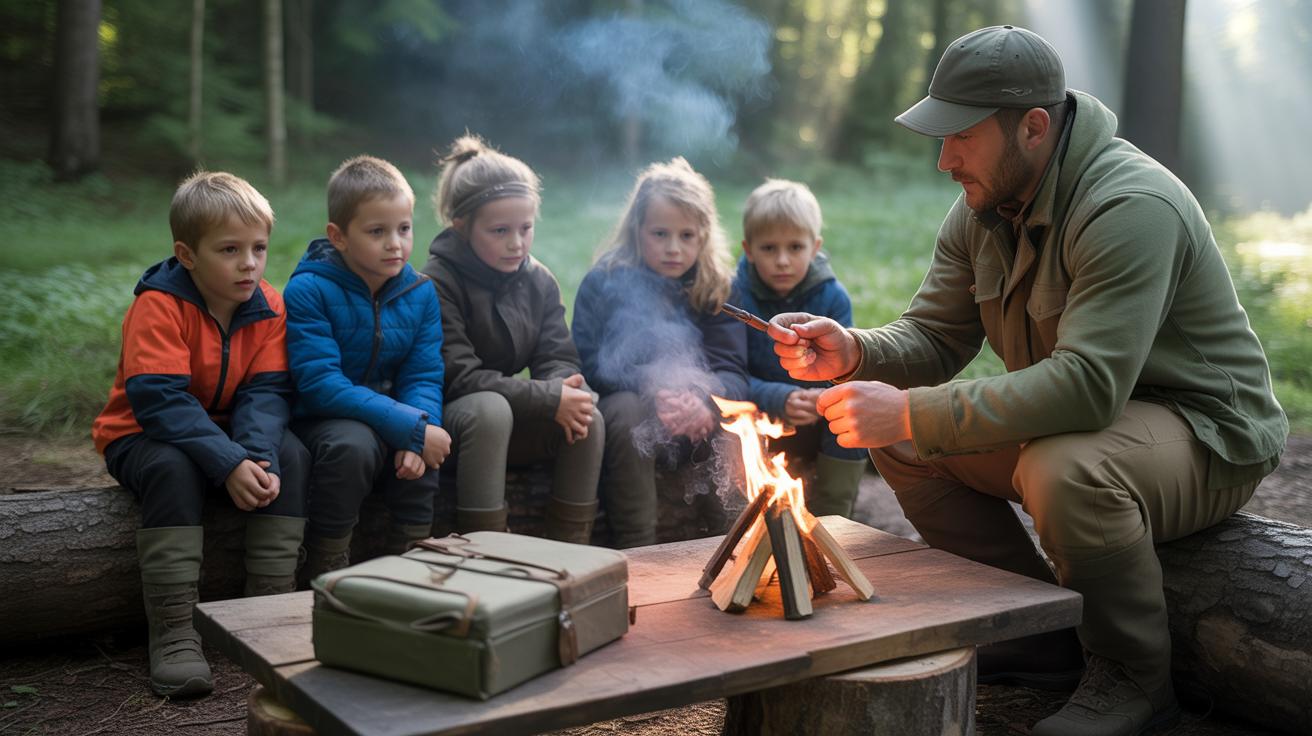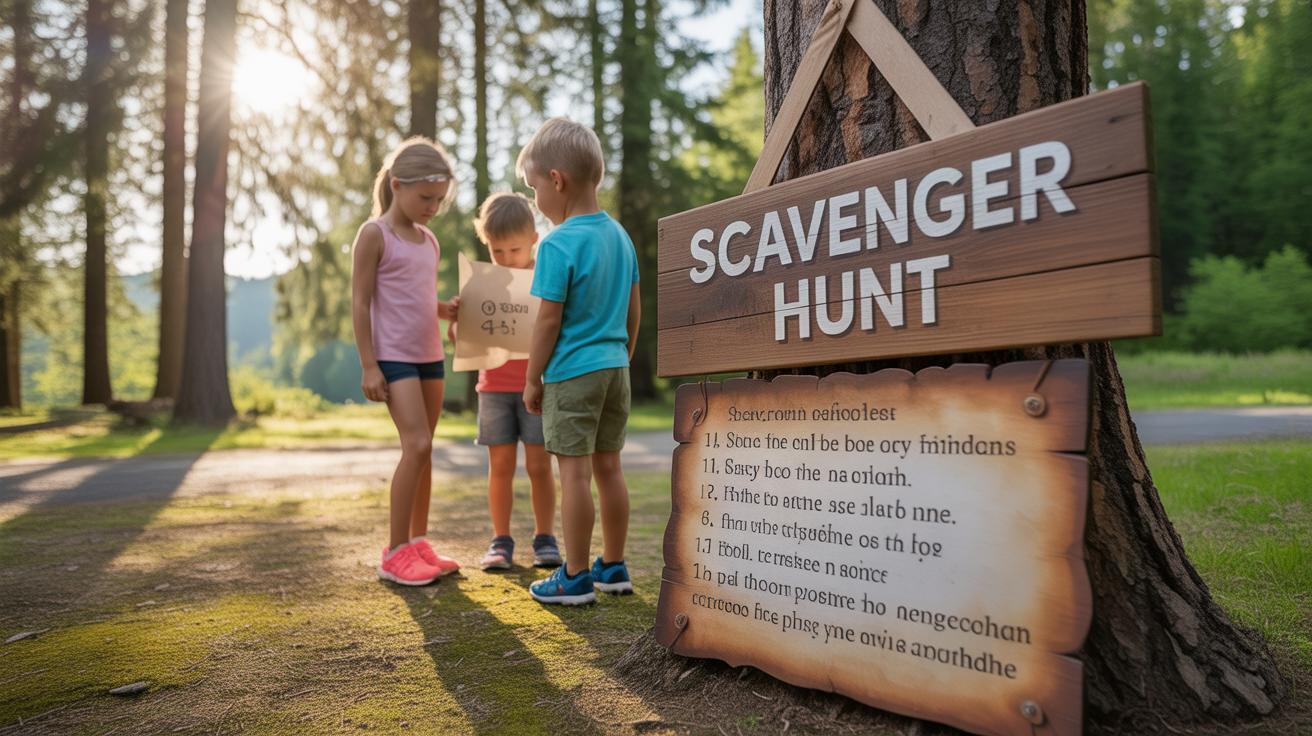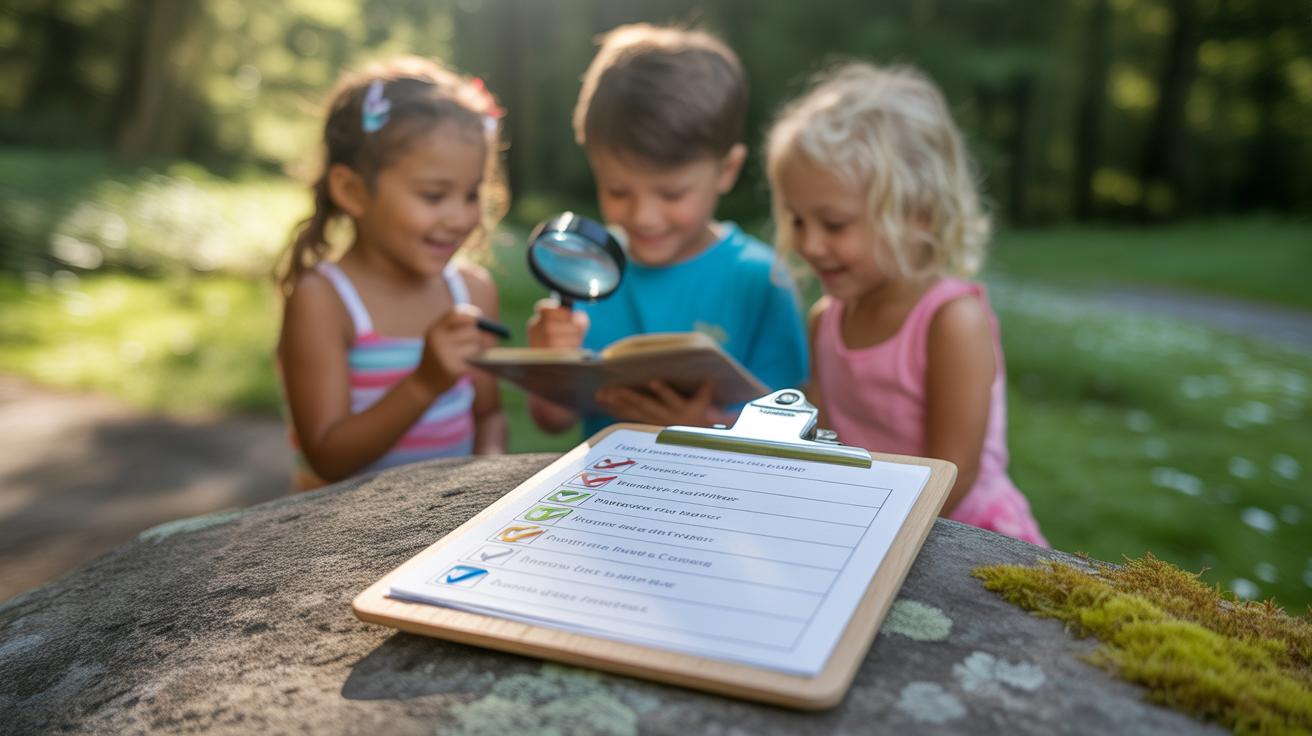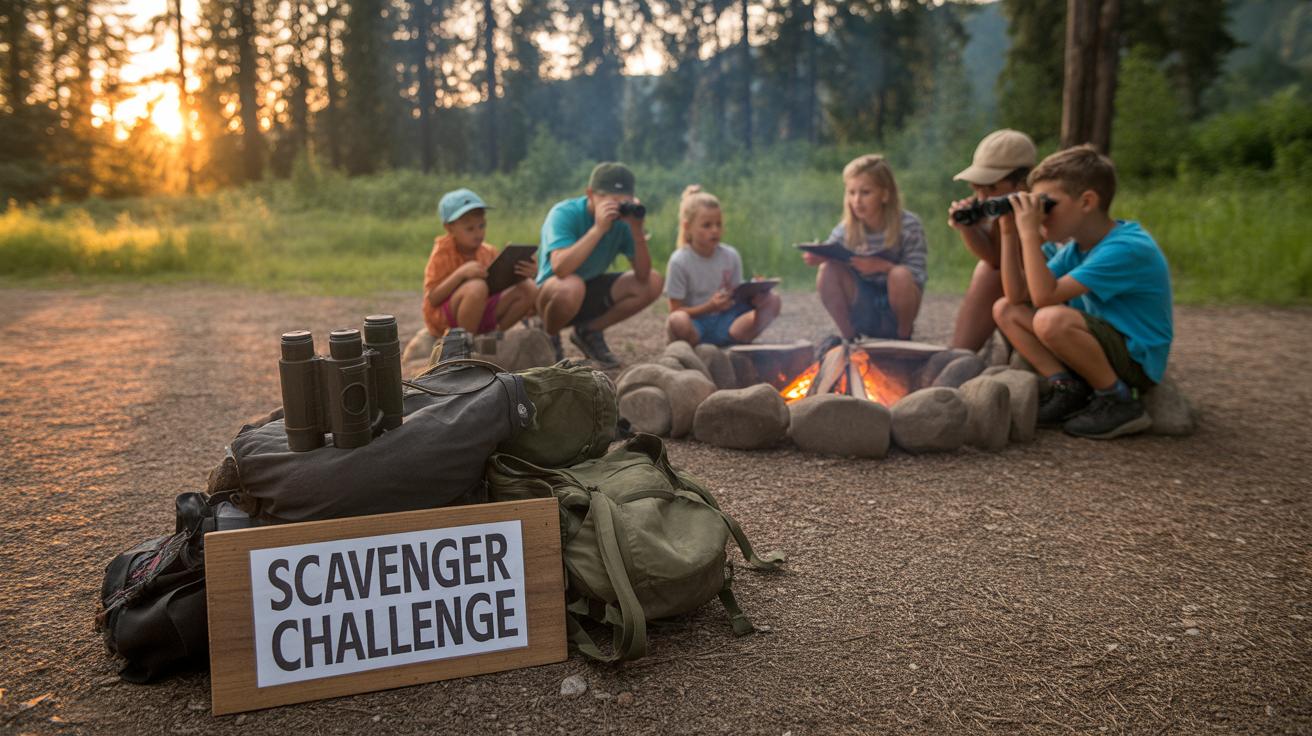Introduction
Backyard adventure ideas for toddler activities open a world of fun and learning for your little one right outside your door. The backyard is a safe place where toddlers can explore nature, play actively, and develop vital skills. You don’t need fancy equipment or a big yard to create enjoyable experiences that stimulate curiosity and movement.
In this article, you will discover simple yet creative backyard activities tailored for toddlers. Each section highlights ways to keep your child entertained and engaged with hands-on games, nature exploration, and educational play. These ideas will help you foster your toddler’s growth while enjoying fresh air and sunshine together.
Setting Up a ToddlerFriendly Backyard Play Area
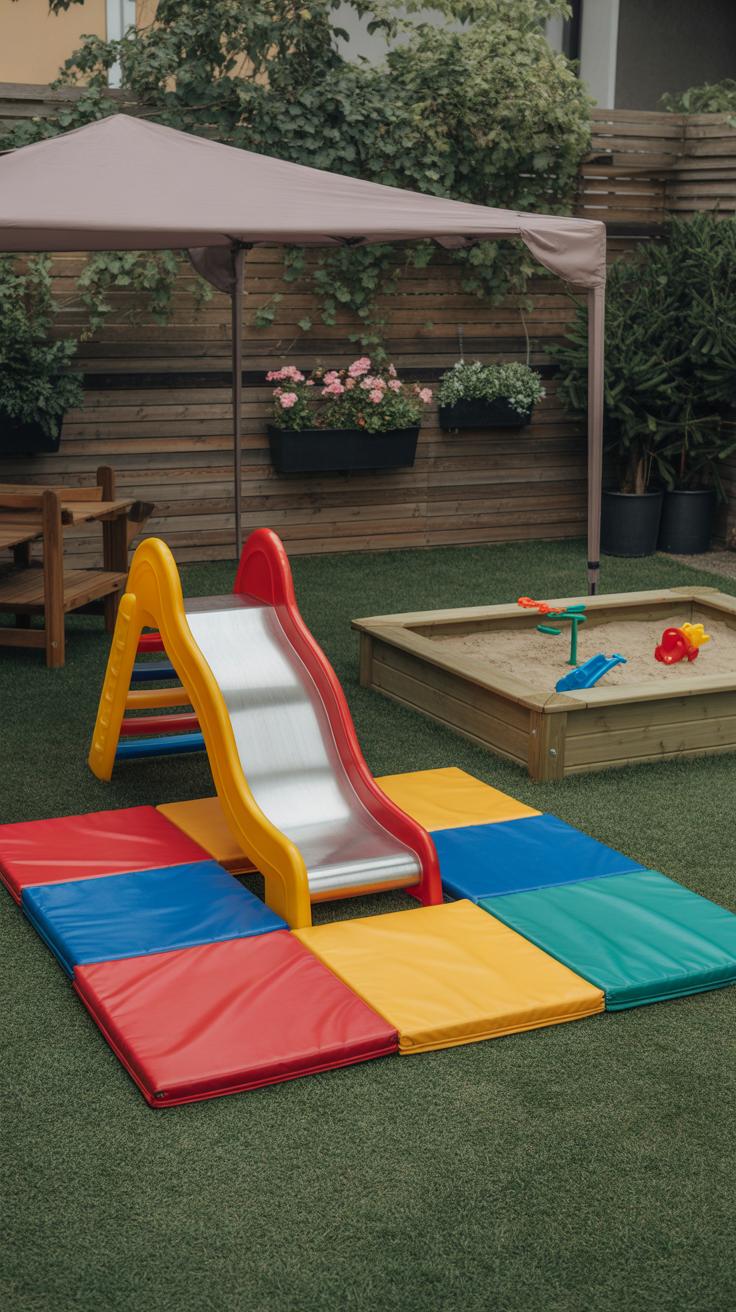
Creating a backyard space where toddlers can explore safely means starting with a good clear-out. Look around for anything sharp, toxic plants, or small objects that might get swallowed. It’s surprising how many little things can hide in grass or under shrubs. Removing those hazards makes a huge difference.
Shade is another must. Toddlers can’t spend hours in the sun without some kind of cover. Whether it’s a simple umbrella, a pop-up tent, or even a tree branch that creates a cool spot, make sure they have a place to rest and cool down.
Choosing play equipment? Go for simple and sturdy—nothing too high or complex. A low slide, a small climbing step, or a soft play mat works well. Sometimes less is more. You want them curious and moving but not overwhelmed or at risk of falling too far. I find that making sure everything is anchored well stops a lot of accidents before they start.
Safety First When Planning Outdoor Play
Keeping toddlers safe outdoors takes more than just watching them. Fence gates that lock or close securely help keep little ones inside your yard, away from driveways or streets. Check that gates actually latch each time—easy to forget in a rush.
Soft surfaces are worth the effort. Grass is better than concrete, but adding rubber mats or mulch under play areas helps absorb falls. You’d be surprised how often toddlers trip and land hard. These layers can save a scrape or bruise.
Supervision is not optional, but it doesn’t mean hovering constantly. Take breaks or do chores nearby. Keep your eyes on them but allow some freedom. It’s tricky because toddlers move fast, and they don’t always stay where you expect. Getting used to brief check-ins feels more natural with time.
Choosing Simple Equipment to Spark Imagination
Some of the best toys are those that open doors to creativity without being complicated. A sandbox is a classic—kids love digging and building, and it’s easy to set up.
Tunnels or pop-up tents also encourage crawling and hiding games. These are easy to find and often fold away for storage. Kids seem to enjoy small spaces where they can feel a bit secretive or cozy.
Water tables combine play and discovery. Filling one with water to splash or add cups and spoons invites sensory exploration. You don’t need fancy gear; a shallow plastic tub and some kitchen utensils work just fine.
Simple things sometimes offer the richest experiences. You might notice your toddler focusing for longer periods or coming back with new ideas because the equipment fits their needs and curiosity just right.
Nature Scavenger Hunts for Toddlers
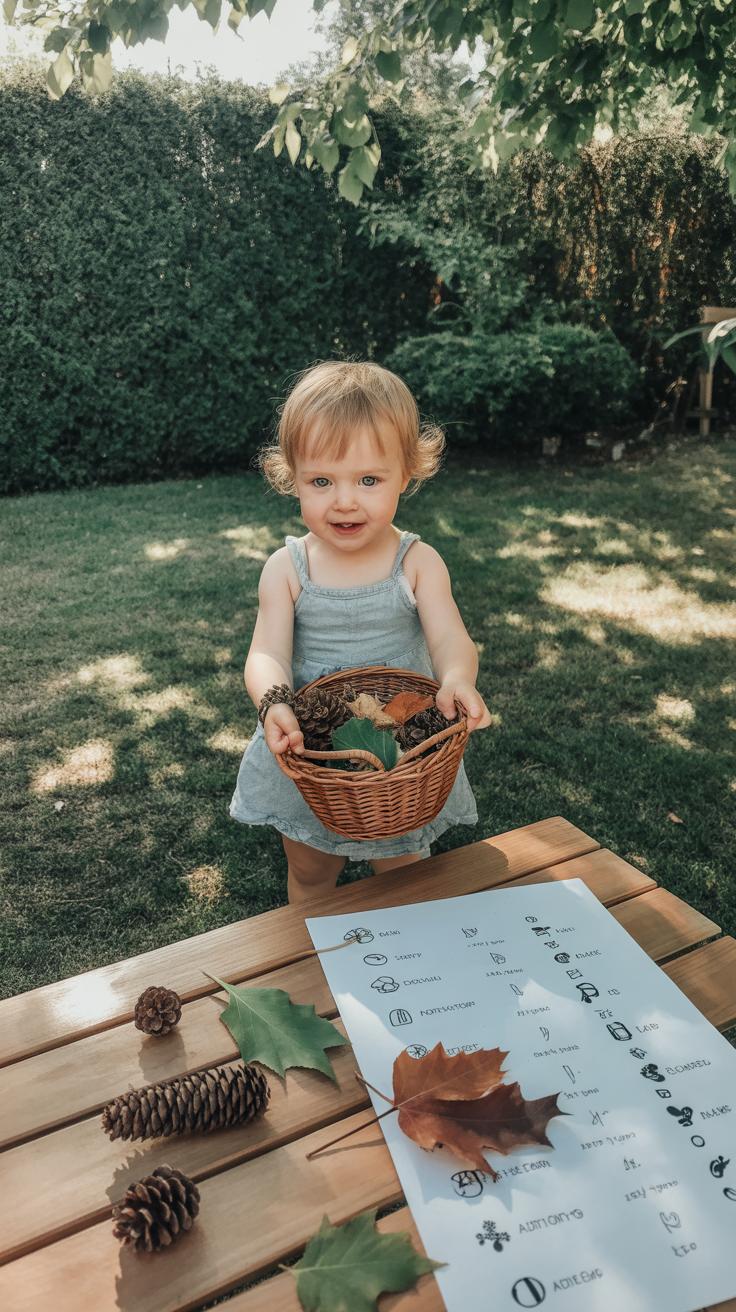
Nature scavenger hunts can be a gentle way to guide toddlers toward noticing the little things outside—things they might usually overlook. The idea is to create a simple list with items easy enough for them to find but varied enough to spark curiosity.
When you prepare the scavenger list, involve your toddler as much as possible. Ask questions like, “What do you want to look for?” or “Do you think we can find leaves that are red or yellow?” This helps them feel part of the process rather than just following orders. Simple items like:
- A green leaf
- A round rock
- A small flower
- A stick
- A piece of bark
are good starting points. You might be surprised how toddlers sometimes pick the most unexpected things, reflecting their own sense of wonder.
The real value comes when toddlers start to explore and talk about what they find. Encourage them to describe textures, colors, or even sounds—like how crunchy a leaf feels or how the bark smells. This not only sharpens their observation skills but also develops their language. You could ask, “Is this leaf smooth or rough?” or “Can we find a flower bigger than this one?”
Pay attention to their reactions. Maybe they’ll lose interest quickly or get intensely focused on one item, and both responses are okay. The key is to create a playful space that subtly guides them to notice the environment around them. Over time, this might encourage a lifelong curiosity about the natural world, even if their focus shifts to other things tomorrow.
Water Play Adventures
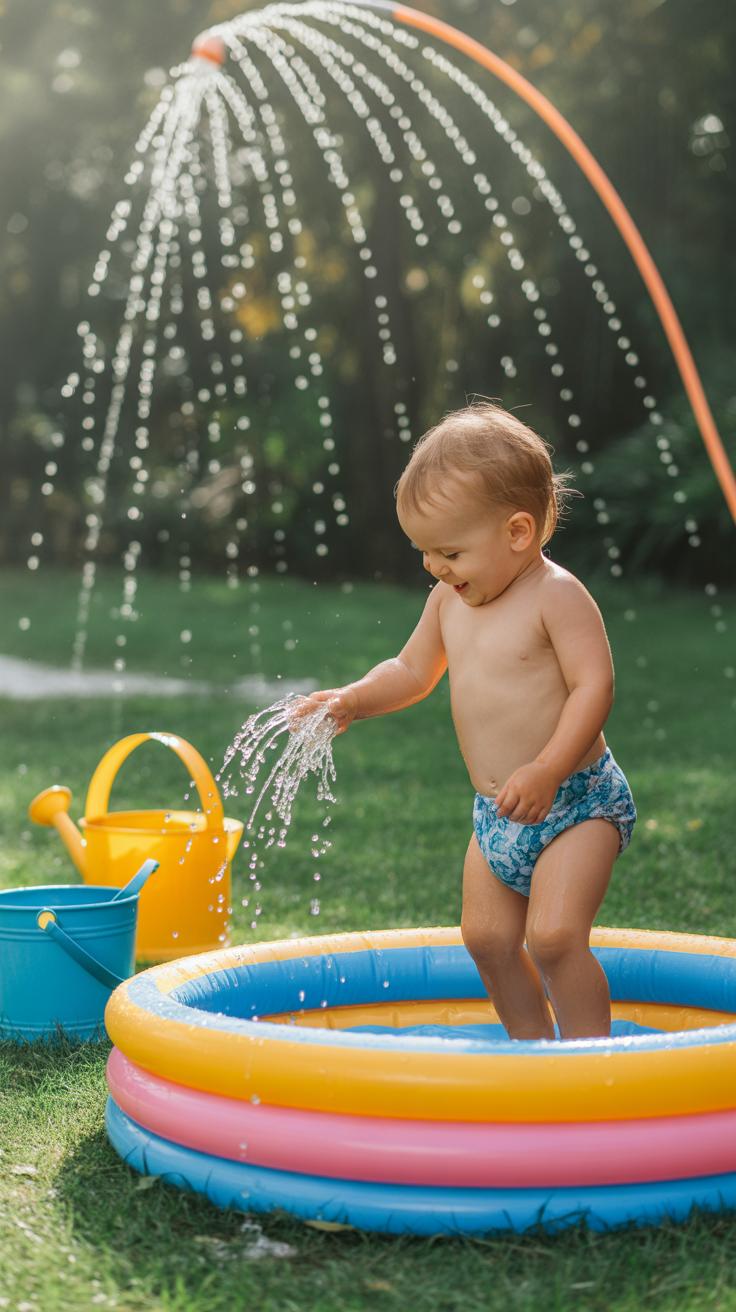
Water play can be one of the best ways to keep toddlers entertained outdoors, especially when the sun is out. It’s not just about cooling off; water invites curiosity and discovery. Things like splash tables, small pools, or even filling up balloons can turn your backyard into a tiny water wonderland. I’ve noticed my toddler’s eyes light up when discovering how water moves or splashes.
You might want to try a simple plastic tub with cups and spoons for pouring. Or maybe water balloons for some gentle tossing games. Small inflatable pools aren’t just for swimming; they can become a space for floating toys and making little waves with hands or feet.
Simple Water Games for Hot Days
On those hot days when just standing outside makes everything sticky, water games come to the rescue. Easy ideas that don’t need much setup often work best:
- Pouring water from one container to another—this simple action holds toddlers’ attention for minutes on end.
- Playing with floating toys like plastic ducks or boats encourages gentle splashing and chasing after them.
- Blowing bubbles over water surfaces adds another layer of fun—and surprisingly, toddlers often delight in trying to catch or pop those bubbles.
Games like these may seem basic, but they tap into toddlers’ natural love of cause and effect. Plus, they require minimal equipment, making them perfect for spontaneous play.
Learning Through Sensory Water Experiences
Water isn’t just fun. It teaches. Toddlers learn about textures when they run their fingers through cool or warm water. They notice the difference between heavy, dripping water and light, misty sprays. Sometimes they pause, perplexed, trying to grasp why water disappears when poured but returns when filled up again.
These experiences build foundational skills. Cause and effect become clearer when they see water shape around objects or splash when stirred. Temperature changes spark simple questions: “Why is this water cold?”
Most of all, water play invites toddlers to explore at their own pace. They experiment, sometimes repeat the same action endlessly, learning not just about water but about their own curiosity and responses to the world.
Gardening With Toddlers
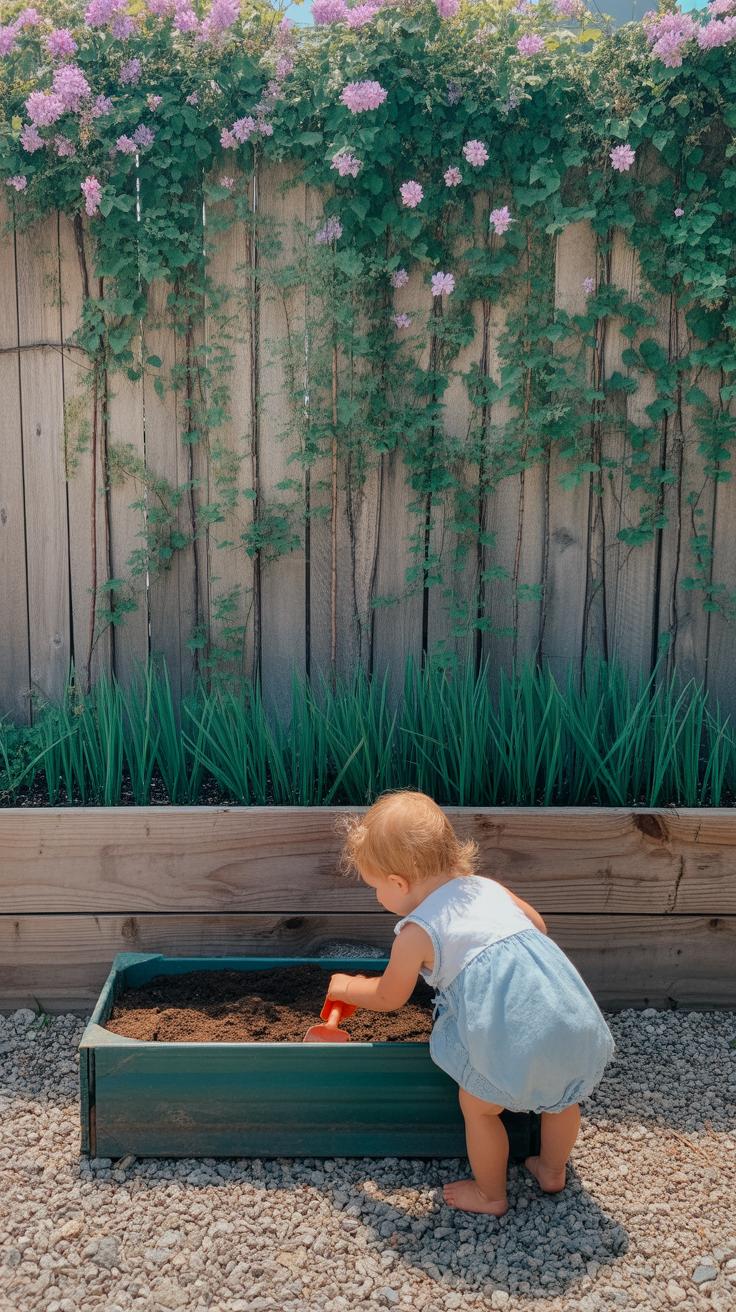
Getting toddlers involved in gardening offers a chance to gently introduce them to nature’s rhythms. They can help plant seeds, which is always a fun, messy activity—digging little holes, dropping seeds in, then covering them back up. It feels like a small mission that somehow feels big to them.
Watering plants is another way toddlers can feel useful. You don’t need fancy tools; even a small cup or a lightweight watering can works. It teaches patience and care, though you might find yourself reminding them about not overwatering.
Watching plants grow, day by day, sparks curiosity. Toddlers may not notice every change, but pointing out new leaves or tiny buds can lead to great questions. It’s one of those slow reveals that builds a bond with nature over time.
Choosing Plants That Are Safe and Easy to Grow
When picking what to plant, think about simple, safe, and fast-growing plants. Sunflowers are a popular choice—kids love the big, bright flowers and the tall stems provide a bit of excitement as they grow.
Herbs like basil or mint also make good candidates. They have strong scents and soft leaves that toddlers love to touch and smell. Plus, they’re forgiving if watered irregularly, which matches a toddler’s unpredictable watering habits.
Let your child feel in charge of these plants. They can even name them if you allow, which makes the whole experience more personal and engaging.
Teaching Toddlers About Plant Life Cycles
Explaining how plants grow might sound tricky, but it doesn’t have to be complicated. Using pictures or storybooks that show a seed becoming a flower helps make it concrete.
Try a simple hands-on approach: a clear jar with cotton balls and seeds lets kids watch roots and shoots appearing. They get to see what’s invisible underground.
Ask questions like “What do you think happens next?” or “Why did the leaves grow bigger?” This prompts curiosity more than just offering facts. Sometimes, toddlers surprise you with what they notice.
Outdoor Art Projects
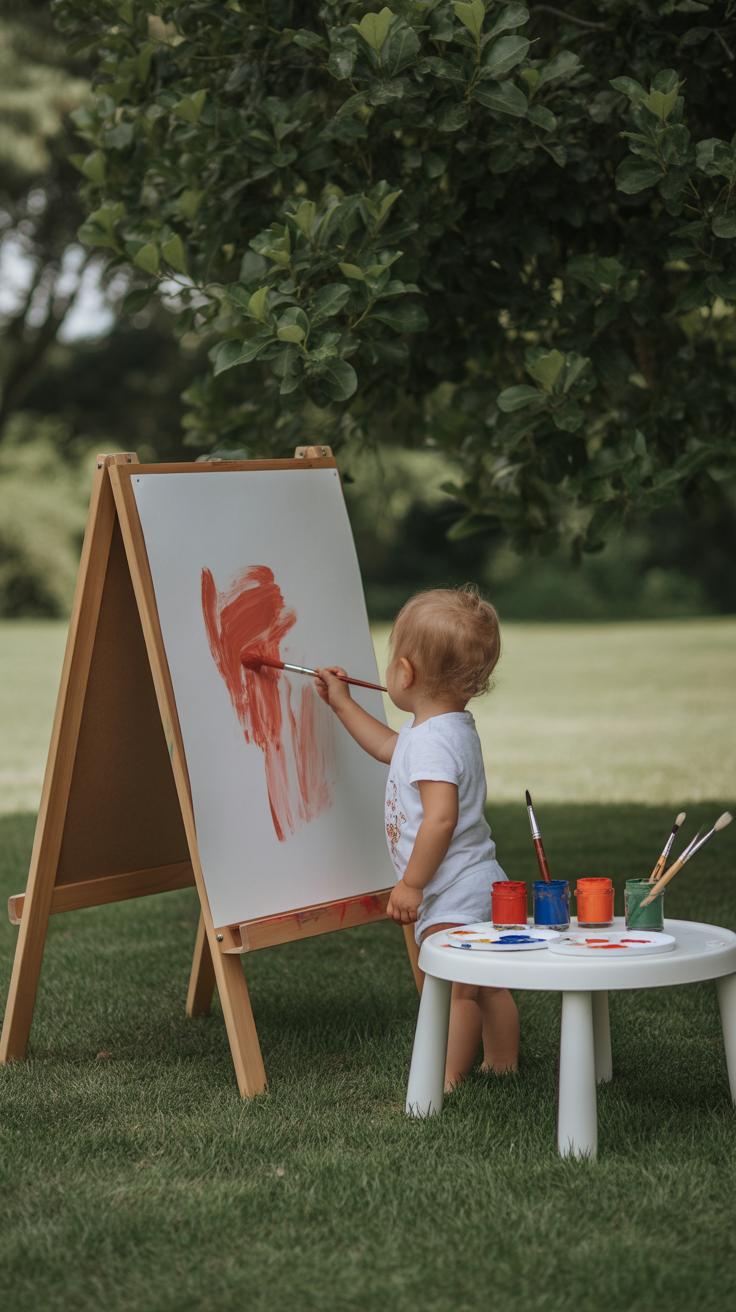
Encouraging toddlers to create art outdoors is a wonderful way to blend imagination with nature. Using simple natural materials like leaves, sticks, or flowers, you can turn any backyard space into a colorful workshop. I’ve found that toddlers really enjoy feeling different textures, and when you add safe paints and some sturdy paper, the results can be surprisingly unique—even if the process gets a little messy.
Collecting Natural Items to Inspire Art
Before the art begins, take time to explore your yard together. Let your toddler gather leaves of various sizes and colors, twigs that snap easily, or petals that are soft to the touch. Talk about what you find—perhaps the shapes seem round or jagged, and the colors range from bright yellows to deep greens. This simple step not only fuels creativity but also sharpens observation skills. Just be cautious about picking anything sharp or that might irritate skin.
Simple Crafts That Toddlers Can Make Outside
Once you have your natural treasures, try leaf rubbings using crayons or pencils on paper. It’s surprisingly fun to see the patterns pop up, especially with different types of leaves. Finger painting is another favorite, and you can experiment with natural dyes made from things like beet juice or blueberry juice to keep it safe. The mess might be a bit more than you expected, but that’s part of the charm, right? These activities can stretch attention spans and even become a quiet moment amid the outdoor play.
Building and Pretend Play Zones
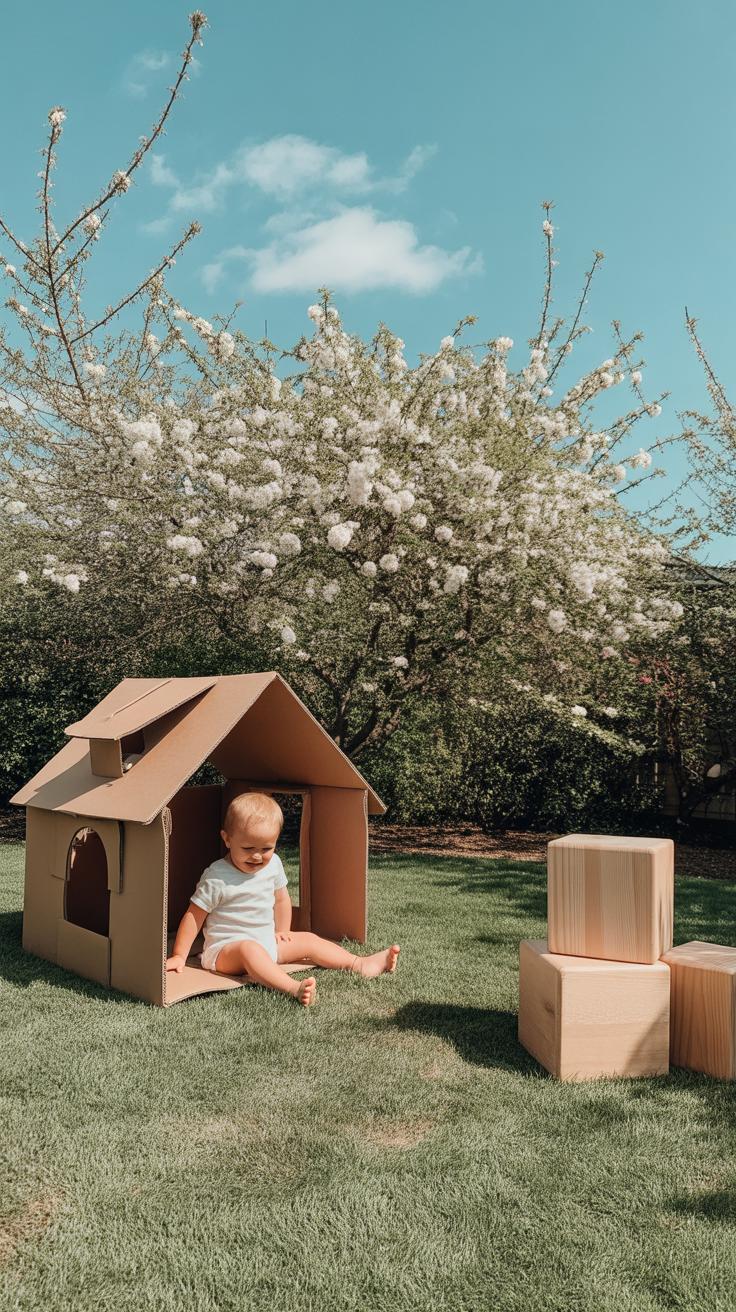
Using Simple Materials for Building Fun
Creating a dedicated building spot in your backyard doesn’t need fancy supplies. Large foam blocks, cardboard boxes, or even cushions can do wonders. I once watched a toddler transform a few old boxes into a “castle” that became their entire kingdom for the afternoon. You might find that simple materials spark more creativity than pricey kits. Throw in some blankets or fabric for walls or roofs—suddenly, it’s a fort, a spaceship, or a cozy house.
Don’t worry about making things perfect or stable all the time. Toddlers enjoy the process of stacking, knocking down, and rebuilding—repeat play actually helps ideas stick. What’s fun about these materials is how easy it is to change the setup. One day a tower, the next a minecart. The possibilities are endless if you keep materials accessible and safe.
Encouraging Storytelling and Role Play Outside
Building zones naturally invite stories. When toddlers climb inside a fort or sit behind a block “counter,” they start inventing roles and scenarios. You may hear exchanges between “shopkeepers,” “builders,” or “captains”—roles change quickly and sometimes overlap in funny ways. Pretend play like this helps your child practice talking, listening, and problem-solving without even realizing it.
Try joining in as a character or simply ask gentle questions like, “What’s happening here?” or “Who lives in this house?” It sparks longer conversations and keeps the game going. You might find your little one repeating phrases or creating new voices, which shows budding confidence and social skills. Outdoor play adds fresh energy—there’s something about being in the open air that invites sparks of imagination to run wild.
Music and Movement Activities
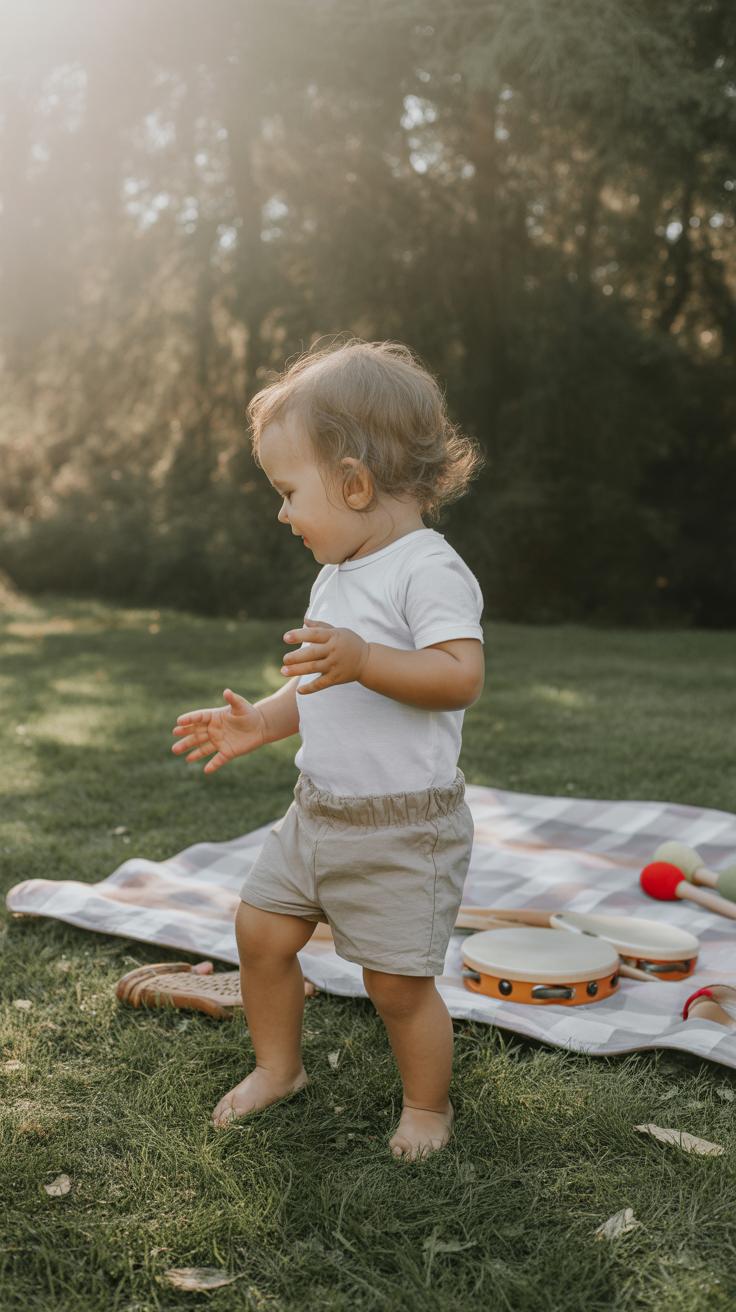
Getting toddlers moving and making sounds outside can be a simple joy. A backyard dance party is easy to set up and often turns out better than you might expect. Pick a spot with some open space—maybe a patch of grass or a flat deck. Lay down a colorful blanket or a small rug to mark the dance zone. Add some comfy pillows nearby for quick breaks. Then, pick a handful of songs with lively beats that encourage movement—think “If You’re Happy and You Know It” or some gentle, bouncy tunes. These familiar melodies help little ones feel confident moving their bodies.
Sometimes the best instruments are right in your kitchen. Pots and pans work surprisingly well as drums. Plastic containers with dried beans or rice make great homemade shakers—just make sure lids are tightly secured. Wooden spoons become drumsticks. Let toddlers tap, bang, and shake these items freely. It’s messy, maybe noisy, but they explore rhythm and sounds without needing fancy gear. Watching their faces light up as they find new sounds is a reminder that music really is everywhere.
Sensory Paths and Obstacle Courses
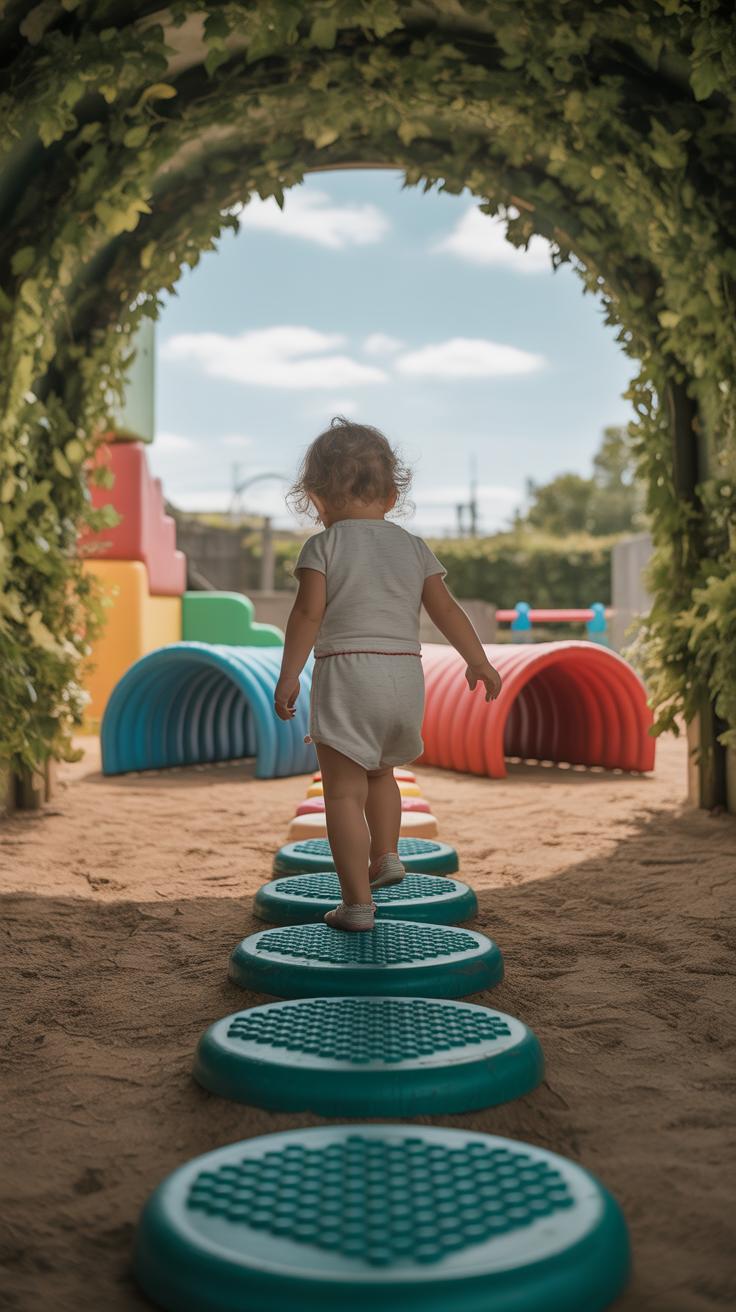
Designing Toddler-Safe Routes With Varied Surfaces
Creating simple sensory paths in your backyard can be easier than you might think. Think about combining different materials—patches of grass, soft mats, smooth stones, or even scraps of fabric laid out in a pattern. These varied surfaces give toddlers a chance to feel distinct textures under their feet. It’s not just about walking from one spot to another; it’s about discovering how each surface feels and responds. You might notice your child pausing on a cool stone or giggling as their bare feet sink into thick grass.
When planning your route, keep safety in mind. Avoid sharp stones or overly slippery fabrics. Softness and stability win here, but a little unevenness adds a healthy challenge. It’s okay if some parts aren’t perfectly even—this can actually help develop balance. And changing these paths frequently keeps the experience fresh. You could switch from a fabric trail to stepping stones scattered on the grass, making every walk a new adventure.
Encouraging Physical Skills Through Play
Obstacle courses invite toddlers to climb, crawl, and balance, all under the guise of play. Watching a little one try to balance on a log or maneuver through a tunnel might seem simple, but these movements build coordination and muscle strength. Climbing over a soft pile of cushions or crawling under a homemade canopy helps children understand their body’s limits—and expand them.
These activities encourage natural exploration, but they also support important skills. Balancing games sharpen concentration as toddlers figure out where to place their feet. Crawling develops upper body strength, which might surprise you since it seems like just ‘moving on the floor.’ When they climb, they practice problem-solving too: how to get up without toppling over. You may find your child returning again and again to these challenges, eager to master them.
Incorporating Learning Into Outdoor Play

Outdoor play offers a great chance to sneak in some learning without it feeling like a lesson. When toddlers are exploring the backyard, you can gently encourage them to notice details about colors, numbers, or simple nature facts. For example, you might count how many yellow flowers are nearby or name several different kinds of leaves found along a walk. It’s subtle but effective—learning wrapped up in curiosity.
Using everyday objects makes this even easier. Pebbles, sticks, or pinecones become tools for teaching concepts like shapes or colors. Maybe gather a handful of leaves and sort them by size or color together. Toys work too, like stacking blocks to practice counting or spotting shapes. There’s something about physically handling these items that helps toddlers connect ideas.
Asking open-ended questions is another way to stir thinking. Instead of just telling what something is, try questions like, “What do you think this bug might need to live?” or “Can you find something red over there?” These prompt toddlers to observe more carefully and describe what they see. Sometimes their answers surprise you or lead to new investigations, making playtime feel fresh and rich with discovery.
Conclusions
Creating a backyard adventure with your toddler brings many benefits. It keeps them active, helps develop motor and sensory skills, and encourages a love of nature. You can easily adapt these ideas to fit your space and your toddler’s interests. Remember to always supervise closely to ensure safety while your child explores and plays.
Your backyard can become a doorway to learning and joy. With these activities, you build memories, encourage creativity, and support healthy development. Try different ideas from this list and watch your toddler grow happy and confident during outdoor play sessions.


